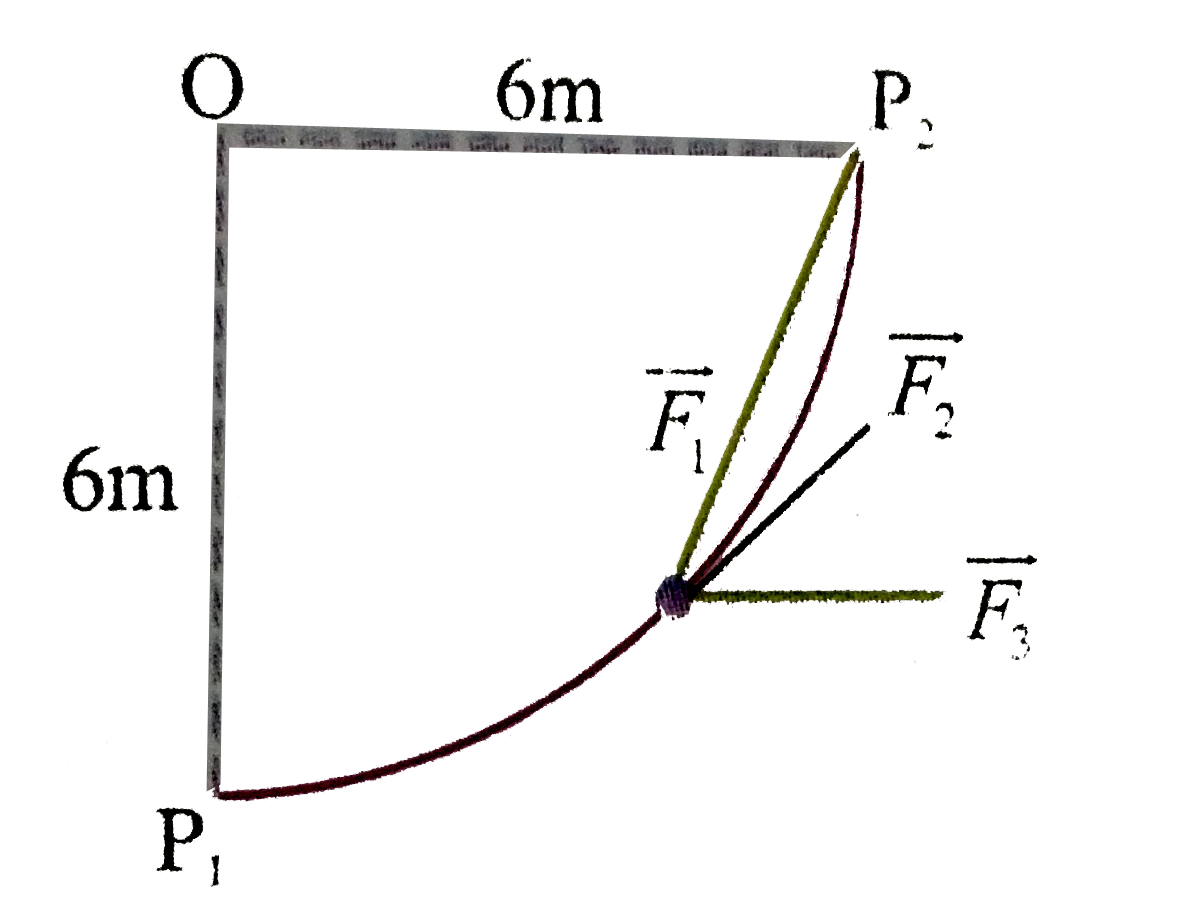A body is under the action of three forces →F1,→F2 and →F3. In which case the body cannot undergo angular acceleration ? .
−→F1,−→F2and−→F3 are concurrent
−→F1+−→F2+−→F3=→0
−→F1,−→F2 is parallel to −→F3 but the three forces are not concurrent
−→F1and−→F2 act at the same point but −→F3 acts at different point.
The correct Answer is:A
Step by step video, text & image solution for A body is under the action of three forces vecF_(1),vecF_(2) and vecF_(3). In which case the body cannot undergo angular acceleration ? . by Physics experts to help you in doubts & scoring excellent marks in Class 11 exams.
Updated on:21/07/2023Topper's Solved these Questions
- LAW OF MOTIONBOOK - NARAYNACHAPTER - LAW OF MOTIONEXERCISE - EVALUATE YOURSELF - 2
11 Videos
- LAW OF MOTIONBOOK - NARAYNACHAPTER - LAW OF MOTIONEXERCISE - EVALUATE YOURSELF - 3
6 Videos
- LAW OF MOTIONBOOK - NARAYNACHAPTER - LAW OF MOTIONEXERCISE - EXERCISE - IV
35 Videos
- KINETIC THEORY OF GASESBOOK - NARAYNACHAPTER - KINETIC THEORY OF GASESEXERCISE - LEVEL-III(C.W)
52 Videos
- MATHEMATICAL REVIEW & PHYSICAL WORLDBOOK - NARAYNACHAPTER - MATHEMATICAL REVIEW & PHYSICAL WORLDEXERCISE - C.U.Q
13 Videos
Similar Questions
If three forces −→F1,+−→F2and−→F3 are represented by three sides of a triangle and −→F1+−→F2=−−→F3 , then these three forces are concurrent forces and satisfy the condition for equilibrium .
Statement II : A triangle made up of three forces →F1,→F2and→F3 as sides taken in the same order ,satisfy the condition for translatory equilibrium . In the light of the above statements ,choose the most appropriate answer from the options given below :
View SolutionABC is an equilateral with O as its centre →F1,→F2 and →F3 represent three forces acting along the sides AB, BC and AC respectively. If the total torque about O is zero then the magnitude of →F3 is :

View Solution
Knowledge Check
A body is inequibrium under the action of three coplanar forces, then
Athey must act in a straight lineBthey must meet in pointCtheir horizontal and vertical components must be equalDnone of theseA body is under the action of two equal and oppositely directed forces and the body is rotating with constant non-zero angular acceleration. Which of the following cannot be the separation between the lines of action of the forces ?
A1 mB0.4 mC0.25 mDzeroA body under the action of several forces will have zero acceleration
AWhen the body is very lightBWhen the body is very heavyCWhen the body is a point bodyDWhen the vector sum of all the forces acting on it is zero
A body is at rest under the action of three forces, two of which are →F1=4ˆi,→F2=6ˆj, the third force is
View SolutionThe resultant of the forces →F1=4ˆi−3ˆj and →F2=6ˆi+8ˆj is
View SolutionA smooth track in the form of a quarter circle of radius 6m lies in the vertical plane. A particle moves from P1 to P2 under the action of forces →F1,→F2 and →F3 Force →F1 is 20N, Force →F2 is always 30N in magnitude. Force →F3 always acts tangentiallly to the track and is of magnitude 15N. Select the correct alternative (s) :
 .
.
View SolutionAt a picnic, there is a contest in which hoses are used to shoot water at a beach ball from three directions. As a result, three forces act on the ball, →F1,→F2and→F3 (see the drawing). The magnitudes of →F1and→F2=50.0NandF2=90.0N. Using the graphical technique, determine the angle such that the resultant force acting on the ball is zero.

View SolutionTwo forces →F1and→F2 are acting at right angles to each other, find their resultant ?
View Solution
